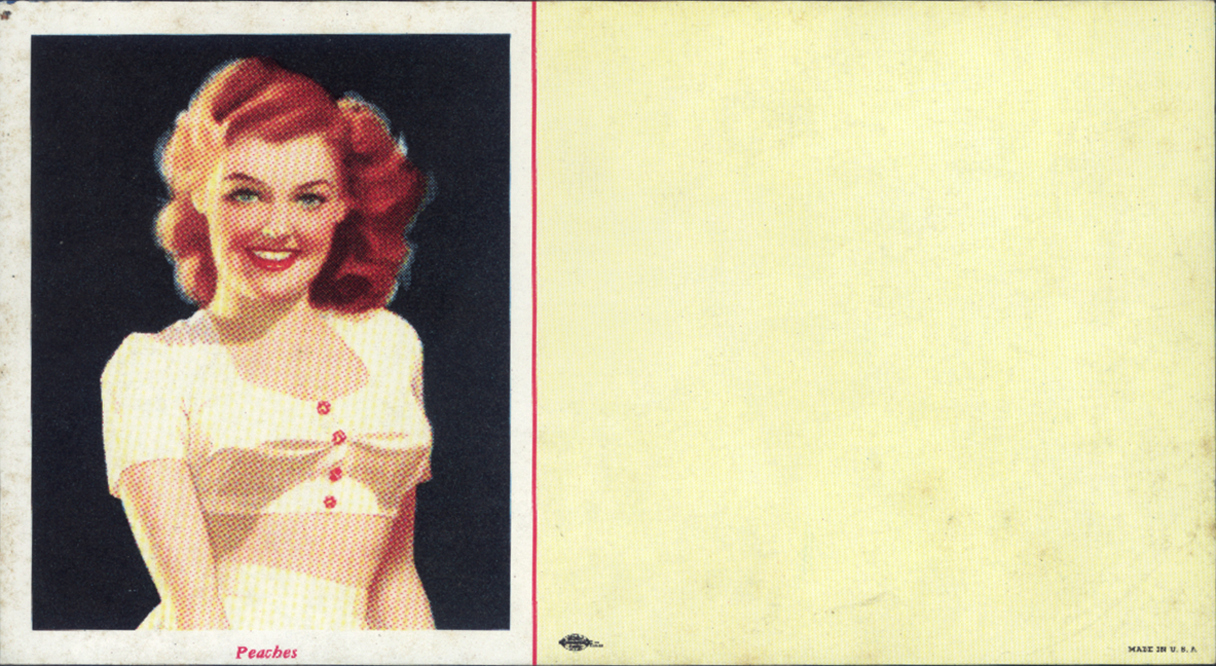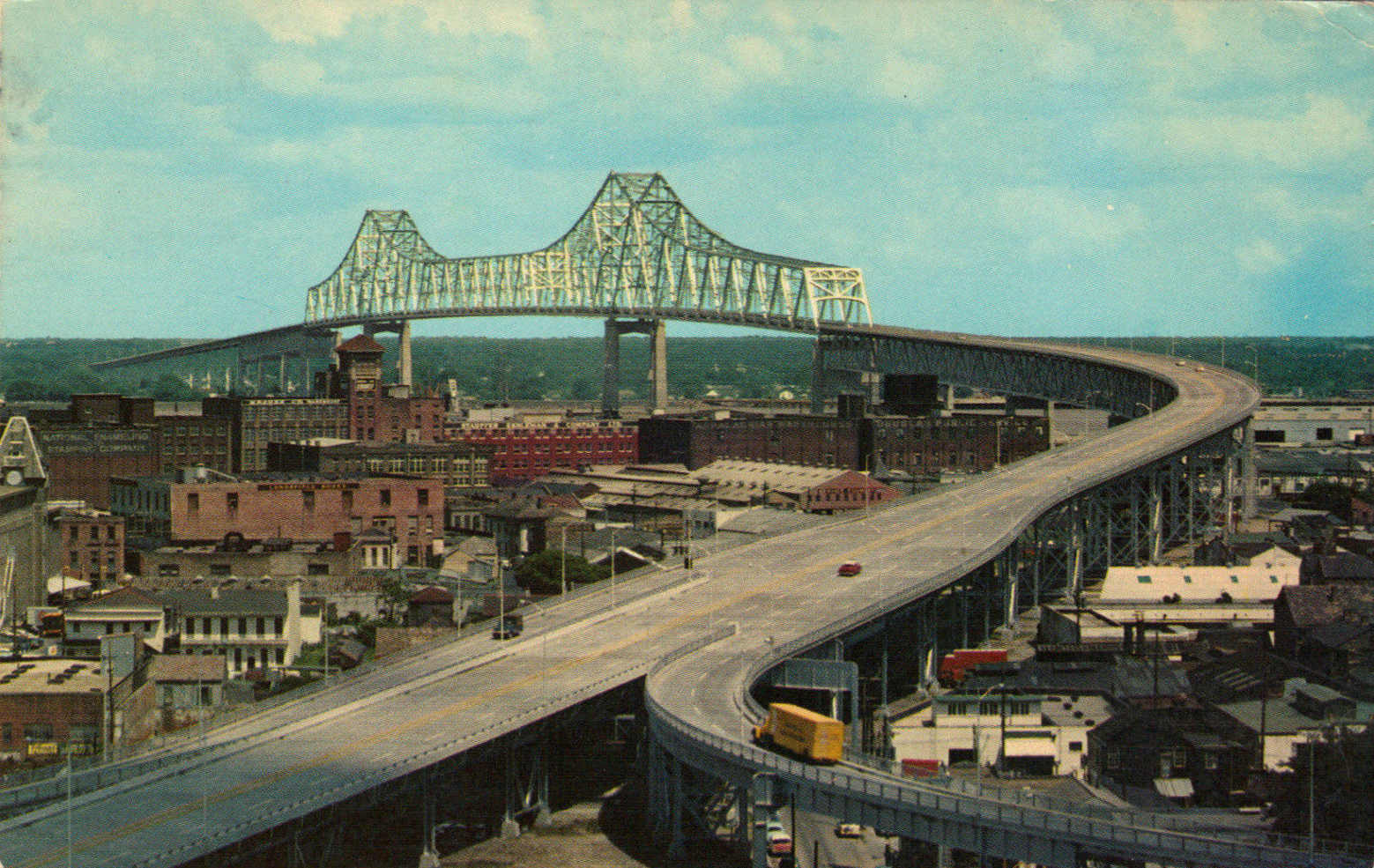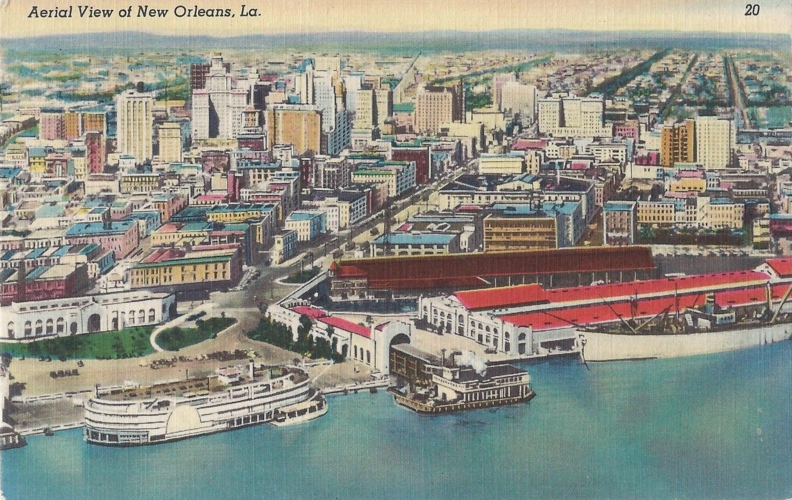
Please join us on our journey to save 30,000 historic New Orleans newspapers: bit.ly/preservearchives

Please join us on our journey to save 30,000 historic New Orleans newspapers: bit.ly/preservearchives
Please vote for Intelligent Archives L3C for People's Choice Award for 2019 Start Up of the Year, New Orleans on April 30th!
An incredible film is coming out today that is directly relatd to our project & archive!
PBS's American Masters series presents: Joseph Pulitzer: Voice of the People
Joseph Pulitzer: Voice of the People Presents the Story of the Newspaper Innovator and Champion of a Free Press
Premieres nationwide Friday, April 12 at 9 p.m. on PBS (check local listings), pbs.org/americanmasters and PBS apps
American Masters – Joseph Pulitzer: Voice of the People explores the remarkable man behind the prestigious prizes. A Jewish immigrant from Hungary, Joseph Pulitzer began as a gifted journalist before becoming a successful publisher and businessman. Pulitzer was famous in his own time for his outspoken and cantankerous editorial voice and his newspapers’ striking illustrations, visual style, national circulation and financial success. Against the context of America’s explosive growth as a world force during the Gilded Age, Pulitzer emerges as the country’s first media titan, reshaping the newspaper to bear witness to and even propel that transformation. Joseph Pulitzer championed what he regarded as the sacred role of the free press in a democracy. At the end of Pulitzer’s life, President Theodore Roosevelt sued him for “criminal libel,” citing the ongoing investigation of potential corruption in the building of the Panama Canal. Pulitzer’s little-known Supreme Court victory in 1911 established important precedent for the First Amendment right to free speech and resonates strongly in today’s fraught political environment.
Narrated by Adam Driver, the documentary tells the story of Pulitzer’s life and accomplishments through a combination of archival footage, reenactments and interviews with authors, journalists and scholars. Liev Schreiber is the voice of Pulitzer. Tim Blake Nelson is the voice of Roosevelt and Rachel Brosnahan is the voice of investigative journalist Nellie Bly.
**Notable Film Interviewees:
**
Nicholson Baker, co-author with Margaret Brentano, “The World on Sunday”
Daniel Czitrom, Professor of History, Mount Holyoke College; author, “New York Exposed”
Chris Daly, Professor of Journalism, Boston University; author, “Covering America: A Narrative History of a Nation’s Journalism”
James McGrath Morris, biographer, “Joseph Pulitzer: A Life in Politics, Print and Power”
David Nasaw, Professor of History, The Graduate Center, CUNY; author, “The Chief: The Life of William Randolph Hearst”
Nancy Tomes, Professor of History, Stony Brook University; author, “Remaking the American Patient”
Andie Tucher, Professor of Journalism, Columbia University; author, “Misinformed: A History of Fake News in America (2020)”
Noteworthy Facts and Themes:
Joseph Pulitzer as entrepreneur and innovator:
Speaking little English, Pulitzer came to America during the Civil War as a Union Army recruit. Although he arrived in St. Louis penniless, within a few years he married an Episcopalian socialite, served as a state senator in Missouri and made his fortune by creating two best-selling English-language newspapers: the St. Louis Post-Dispatch and, in New York in 1883, the World.
When Pulitzer bought the money-losing World in 1883, the daily newspaper’s circulation was 15,000. In three years, he was selling 150,000 every day, a ten-fold increase.
Pulitzer had a brilliant understanding of what an urban, working class, largely immigrant readership needed and wanted to read. He delivered the news to them with lively storytelling and vivid graphics.
Pulitzer’s designers created visually alluring advertisements, breaking up the columns horizontally, vertically or both, to create configurations that fit the advertisers’ desires. As more consumers read his papers, ads rates soared. Department stores became the daily newspapers’ most profitable revenue stream.
Joseph Pulitzer as champion of the free press:
Criticized by newspaper rivals for sensationalism, the World replied, “The daily [newspaper] is like a mirror. It reflects that which is before it. Let those who are startled by it blame the people who are before the mirror, and not the mirror, which only reflects their features and actions.”
After the World, America’s first national paper, called the Panama Canal an act of colonial aggression and insisted that the government account for $40 million that went missing from the project, President Theodore Roosevelt sued Pulitzer for “criminal libel.” Pulitzer fought President Roosevelt all the way to the Supreme Court to ensure that no self-serving presidential pronouncements could muzzle the press. “Freedom of speech is not a favor to be exercised at the pleasure of the President,” declared Pulitzer.
Pulitzer took on public figures and championed a range of causes and crusades. He made few friends in his pursuit of the truth and, in the mid-1890s, he fought for readership with his nemesis, William Randolph Hearst. Both crossed the line into “yellow journalism” during the Spanish-American War. Part of Pulitzer’s impetus for funding the Columbia School of Journalism and the Pulitzer Prizes was in recognition of the exaggerations in reporting published during that crisis.
Pulitzer presciently identified the dangers of “fake news.” He stated in 1902, “I do not say that the World never makes mistakes. There are not half a dozen papers in the U.S. which tamper with the news, which publish what they know to be false. But if I thought that I had done no better than that, I would be ashamed to own a paper. It is not enough to refrain from publishing fake news. […] You have got to make everyone connected with the paper — your editors, your rewrite men, your proof-readers — believe that accuracy is to a newspaper what virtue is to a woman.”
Joseph Pulitzer as social advocate:
The World stylized itself as the “Immigrants’ Bible” and the “Voice of the People.” Pulitzer pledged to educate the burgeoning immigrant population of New York City, providing a range of tools that helped the immigrant arrivals negotiate democracy’s strange folkways, tangled procedures and partisan debates. As he put it, the World “gave voice to the voiceless.”
When the Brooklyn Bridge opened, Pulitzer challenged the one-penny pedestrian toll in his paper with a four-column woodcut of the bridge on the front page of the World, and declared: “Let the Bridge Be Free / A Penny Is a Workman’s Lunch.”
Pulitzer mounted a novel, citizen-financed campaign to construct a pedestal under the Statue of Liberty – raising more than $100,000 (more than $3 million today), including a substantial number of penny donations from schoolchildren.
Pulitzer fearlessly battled monopolies and corrupt government. He called for taxes for incomes above $10,000, crusaded against doctored milk, contaminated water and harmful tenement conditions. He also fought to establish decent wages, safer working conditions and a 12-hour workday, mounting determined crusades against entrenched interests at a time when few dailies did so.

By Missy Wilkinson
Speacial to The Advocate
Most people know the first cocktail was created in New Orleans, where 24/7 bars and drive-thru daiquiri shops rule. Fewer know this booze mecca was a linchpin of Prohibition from 1920 to 1933. Then, lurid tales of smugglers, rum raids and “wet” degenerates ruled the newspapers — which had a definite anti-liquor slant.
“Many good results follow Prohibition,” proclaimed a local headline on Jan. 21, 1921. “Employes more efficient and dependable. … More men attending church. … Tourist business hurt.”
During Prohibition, especially from 1925 on, the illegal booze trade dominated local headlines.
“It almost seems like they wanted nonstop coverage,” said Joseph Makkos, founder and chief curator for Nola DNA, a digital newspaper archive.
“But even though it was published in the paper that was the record of its day, the role New Orleans played as this center of Prohibition is not something people talk, write or even know that much about.”
Makkos hopes to change that with his exhibit, “Times of the Cocktail – Stories of Smugglers, Bootleggers and Rum Runners.” Created in conjunction with Tales of the Cocktail and sponsored by Old New Orleans Rum, it features 12 antique copies of The Times-Picayune.
They’re on display through Aug. 31 in Picayune Social House, 326 Camp St., a restaurant and bar occupying the former site of the newspaper.
Together, these papers paint a picture of Prohibition-era New Orleans. One includes the first printing of a William Faulker short story: “Yo Ho and Two Bottles of Rum.”
New Orleans’ proximity to rum-producing Caribbean islands, train lines and the Mississippi River made it a waypoint in the illegal alcohol trade, as did its easy port access.
“New Orleans was basically open range for smugglers — the ports just weren’t secure,” Makkos said. “No police force is going to inspect every ballast, every false bottom.”
Publication dates for papers in the exhibit range from Jan. 1, 1914, when the idea of Prohibition was introduced to readers via a political illustration, to Nov. 20, 1929, when stories hint at a looming financial crisis. That era also marks the end of Makkos’ collection of original newspapers, which spans 1885 to 1930.
Though these records exist on microfilm, Makkos’ massive collection of antique newspapers in pristine condition is unique. He scored the papers, each housed in its own red-capped tube, for free from a Craigslist ad.
“It took six trips in a 17-foot U-Haul (to move them all),” Makkos said. “I have a feeling those papers would have gone to the trash. In my mind, it clicked: ‘This is important, I need to save this.’ … These are stories that don’t conveniently fit into the glass thimble version of New Orleans’ history.”
More than 300 people attended the opening reception on Tuesday, which featured a photo booth, rum samplings and coaster letterpress printing.
“I love having access to old newspapers from this point in history,” said artist Kendra Thompson. “The news seems so tabloid-y and sensational. You know people were definitely living that life in New Orleans.”
Like the stars depicted in gossip magazines, New Orleanians living 100 years ago were “just like us” in many ways.
“There’s a certain charm about it. As much as it was a criminalized environment, it speaks to the New Orleans we know today, the laissez le bon temps rouler attitude,” said Jeremy Thompson, director of sales and marketing at Old New Orleans Rum. “People made things work and created their own systems — and they were meeting demand, frankly.”
“Time of the Cocktail” runs through Aug. 31.
Complete story can be found online at The New Orleans Advocate

Let's see if I can give you simulatenous updates about the LAST 8 months as well as the NEXT 8 months at the same time!
OK, here I GO....
Upcoming presentations at the New Orleans Public Library:
Nix Branch - June 8th 5:30-7PM
Hubbell Branch - June 26th 6:30PM
Main Branch - TBA
Past:
Alvar Branch - Newspaper Archives & Preservation
Mid-City Branch - Coffee and Kitchen Lore of the Tropics

Image courtesy of Nola DNA.
"When Motorists Needed Canoes" from March 21st, 1926.
An exerpt:
"Plans of property owners for organizations to protest to the sewerage and water board to obtain relief and protection due to heavy rains were in process of formation last night.... a mass meeting will be called to demand an investigation of the sewerage and water board in connection with alleged neglect of the city's needs."


"NOLA DNA Presents "Evening Edition" : A Picayune Social House reception celebrating Lost Correspondence, Forgotten Scandals, and Fake News.
Join us at the brand new Picayune Social House, the former offices of the Picayune newspaper from 1850 to 1919, in this party hosted by NOLA DNA – curators of the historic newspaper images that define the Picayune Social House’s aesthetic.
• Anti-Lecture by Joseph Makkos of NOLA DNA: a slideshow of select historic newspaper images, randomized to spark extemporaneous audience discussions.
• Postcards from the Past exhibit: specimens from the collection of Reno Daret III. http://www.neworleansmardigraspostcardmuseum.com/
Enjoy light hors d’oeuvres and libations. The Picayune Social House restaurant will be open with food and drink specials.

Here're some cir 1950s pin-up ink blotters I scanned from a collection I found in a basement print shop in Cleveland. One is with the business name "HEREFORD TOOL CORP." and the rest are blank.
There will be more open-access content in this series (coming soon).
For now, enjoy:





